The boys are back in town.
After the long winter and rainy spring, the boys are back in town.
That would be the male Valley carpenter bees, Xylocopa varipuncta, or what Robbin Thorp, distinguished emeritus professor of entomology at UC Davis, calls "the teddy bear bees."
They're fuzzy green-eyed blonds, while the female of the species is a solid black, a good example of sexual dimorphism.
You've heard folks say of dogs: "Their bark is worse than their bite?" Well, these bees can't sting ("boy bees don't sting"), but they're good bluffers as they buzz around you. They're also good pollinators.
We saw this one nectaring on our tower of jewels, Echium wildpretii. He lingered among the honey bees and syrphid flies, and then buzzed off.
He will return.
Seeking more information about California's bees? Read the landmark book, California Bees and Blooms: A Guide for Gardeners and Naturalists (Heyday Press), the work of UC-affiliated authors Gordon Frankie, Robbin Thorp, Rollin E. Coville, and Barbara Ertte. The book is available online and at numerous other sites. At UC Davis, you can find it at the Bohart Museum of Entomology, 1124 Academic Surge Building on Crocker Lane (and with other bee books at UC Davis Stores).
Attached Images:
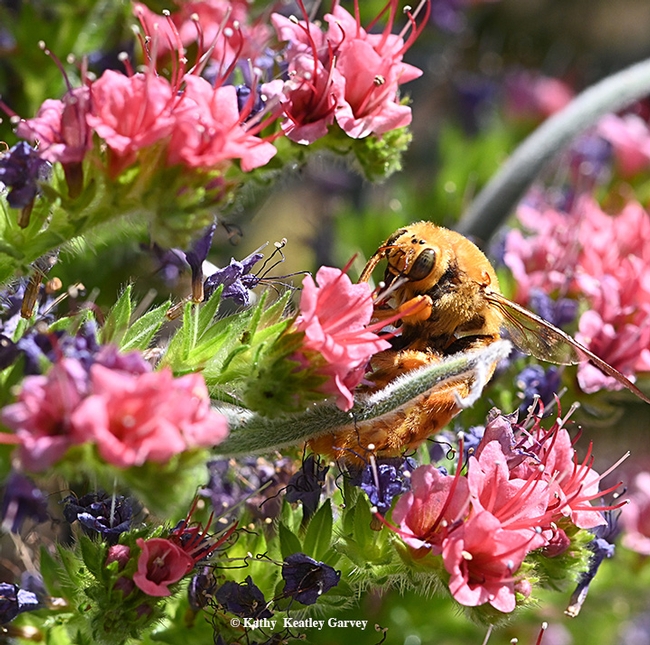
A male Valley carpenter bee, Xylocopa varipuncta, nectaring on a tower of jewels, Echium wildpretii, in Vacaville, Calif. (Photo by Kathy Keatley Garvey)
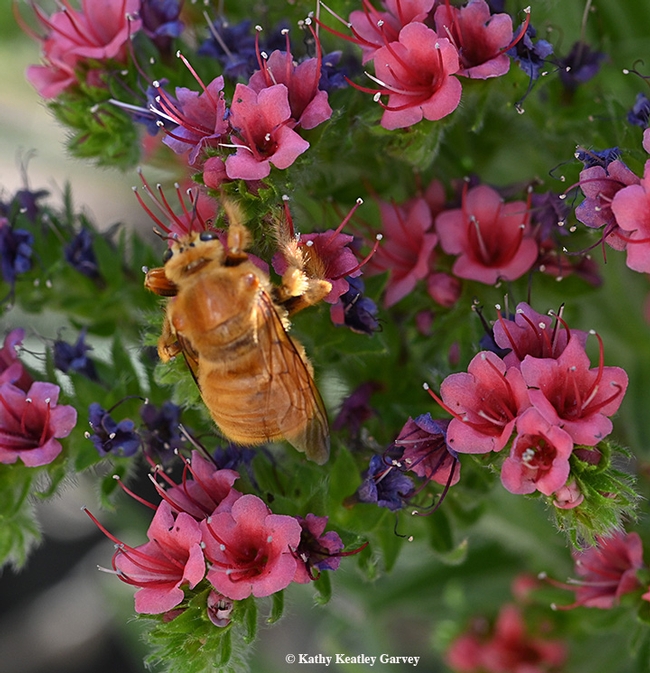
The male Valley carpenter bee is often mistaken for a bumble bee, or what some have called a "golden bumble bee." (Photo by Kathy Keatley Garvey)
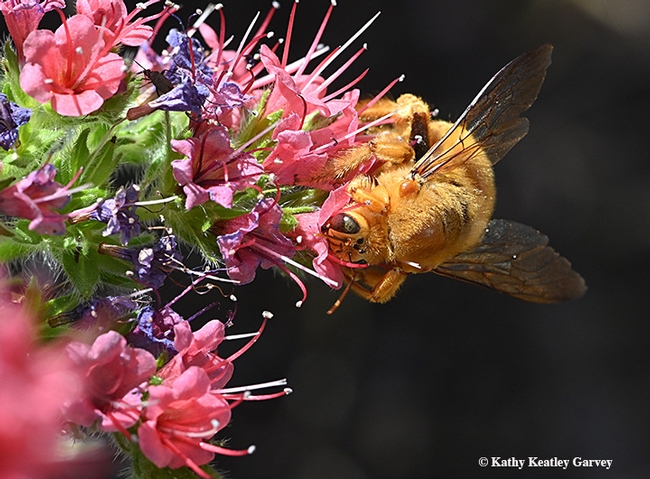
The male Valley carpenter bee didn't perceive the photographer as a threat. (Photo by Kathy Keatley Garvey)
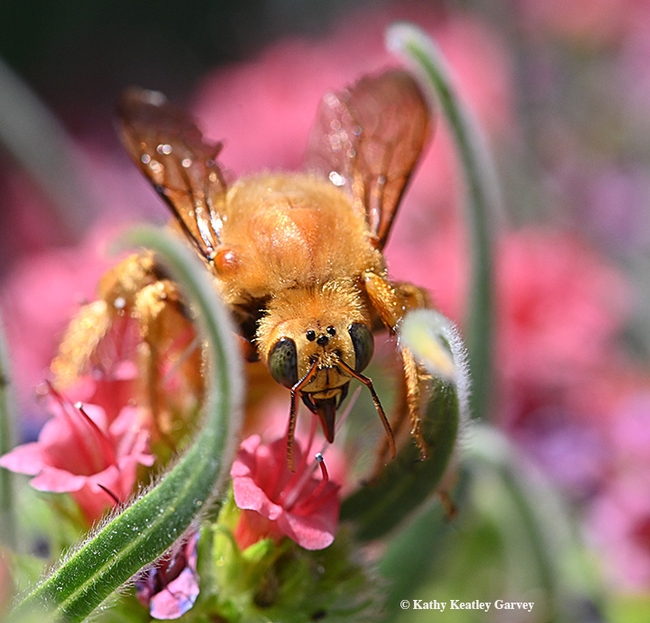
The male Valley carpenter bee protrudes his proboscis (tongue) to sip nectar from a tower of jewels, Echium wildpretii. (Photo by Kathy Keatley Garvey)
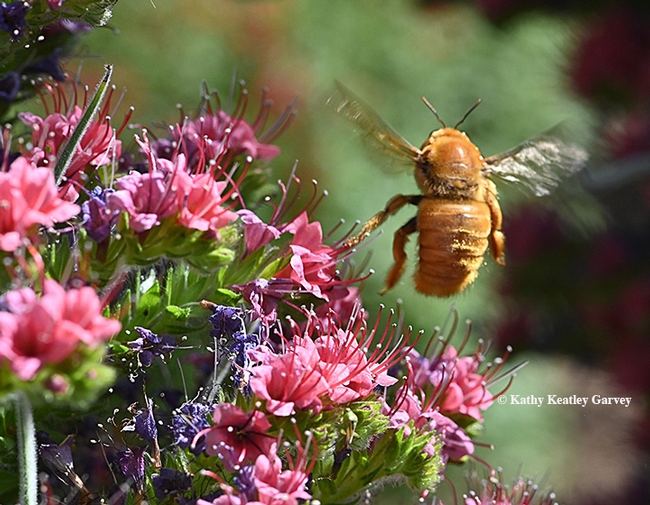
And off he goes, a male Valley carpenter bee in flight. (Photo by Kathy Keatley Garvey)